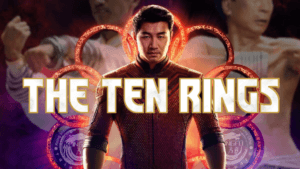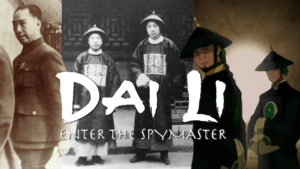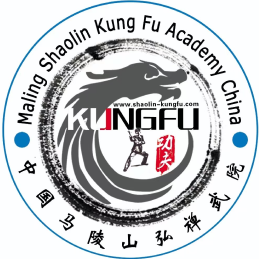Exploring the Cultural Parallels Between “Kung Fu Panda” and the Shaolin Warrior Monks
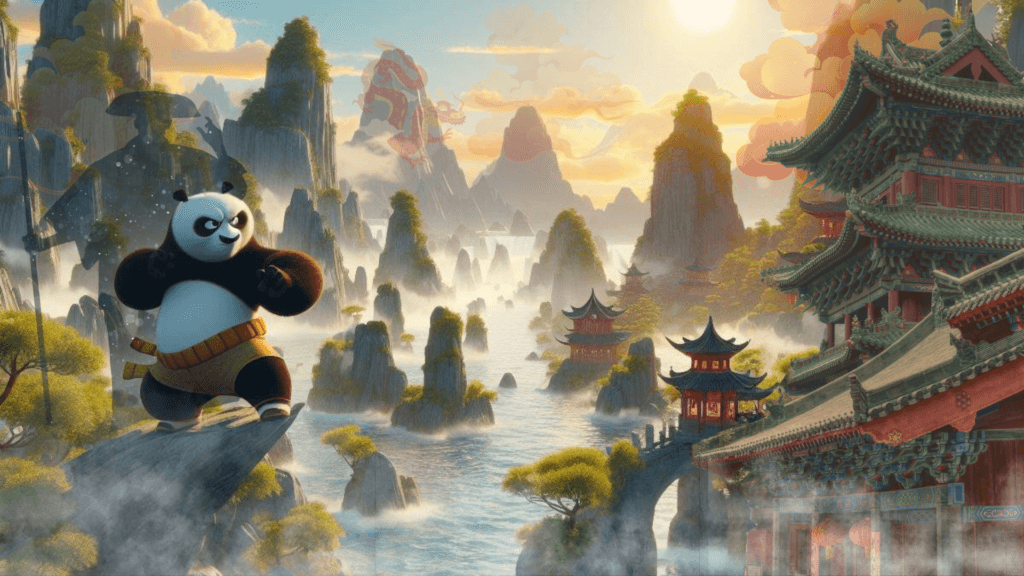
In the animated film series “Kung Fu Panda,” we are introduced to a vibrant world where anthropomorphic animals embark on epic martial arts adventures. While the movies entertain audiences with humor and heartwarming storytelling, they also offer a fascinating portrayal of kung fu and its cultural significance. In this blog post, we’ll explore the kung fu depicted in the “Kung Fu Panda” movies and compare it to the real Shaolin Kung Fu practiced by the legendary Shaolin warrior monks. From styles and training methods to weapons and philosophies, we’ll uncover the parallels between fiction and reality, while also delving into the cultural aspects of Shaolin Kung Fu and China, including history, geography, and the importance of food.
Kung Fu Styles
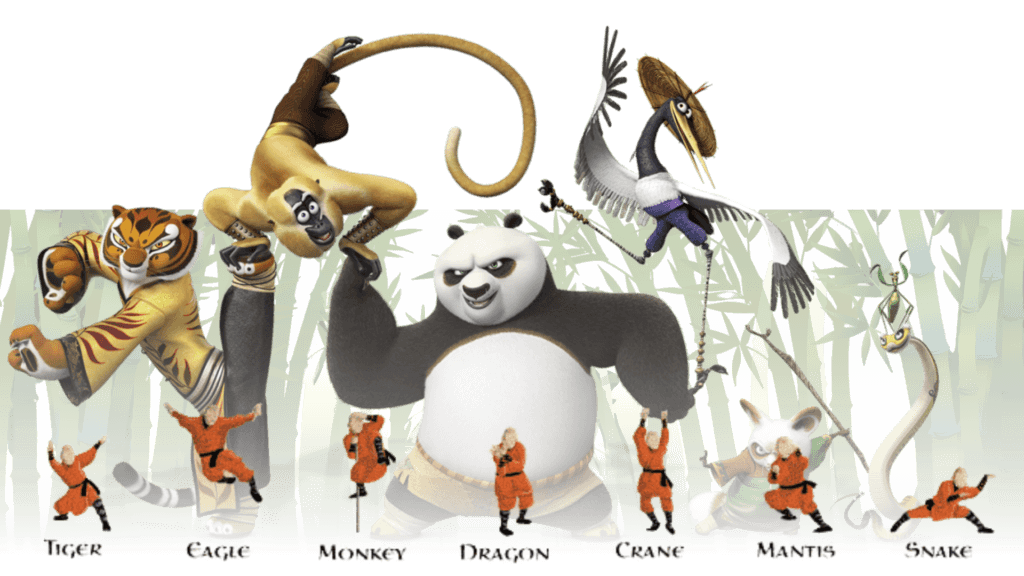
In the world of “Kung Fu Panda,” the diversity of kung fu styles is showcased through the characters of Po and the Furious Five. Each character embodies a different animal style, reflecting their personalities and physical attributes. For example, Tigress represents the strength and ferocity of the Tiger Style, while Crane embodies the grace and agility of the Crane Style. These styles not only serve as tools for combat but also as pathways to self-discovery and personal growth.
Similarly, the Shaolin warrior monks practice a wide range of kung fu styles, each with its own unique characteristics and techniques. From the powerful strikes of Northern Shaolin and the fluid movements of Southern Shaolin to the graceful Dragon and agile Leopard animal forms, these styles reflect the monks’ dedication to physical mastery and spiritual enlightenment. Just as in “Kung Fu Panda,” the diversity of kung fu styles in Shaolin Kung Fu serves as a testament to the richness and depth of Chinese martial arts tradition.
Training Methods and Philosophies

Po’s journey to mastering kung fu begins with humble beginnings and a heart full of determination. Under the guidance of Master Shifu and the mentorship of the Furious Five, he undergoes rigorous training that tests his physical abilities and challenges his inner strength. Throughout his training, Po learns valuable lessons about discipline, perseverance, and the power of inner peace.
Similarly, the Shaolin warrior monks embark on a lifelong journey of self-cultivation through their training regimens. Rooted in Buddhist philosophy, Shaolin Kung Fu emphasizes principles such as compassion, humility, and non-violence. Through physical conditioning, meditation, and philosophical study, the monks strive to embody these principles in both their martial arts practice and daily lives. The philosophies of Shaolin Kung Fu, with their focus on self-awareness and spiritual growth, echo the themes of reincarnation and enlightenment portrayed in “Kung Fu Panda.”
Weapons of Wisdom
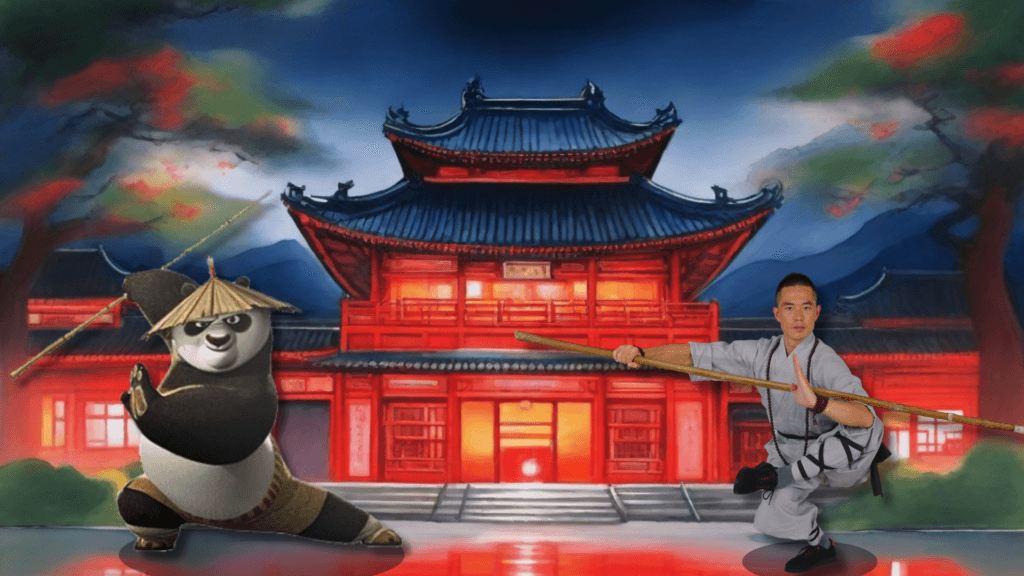
In “Kung Fu Panda,” the characters wield an array of traditional Chinese weapons, each symbolizing a unique aspect of their kung fu style. From Po’s staff to Tigress’s claws, these weapons are extensions of their wielders’ personalities and philosophies, blending seamlessly with their martial arts techniques.
Similarly, the Shaolin warrior monks are skilled in the use of a wide range of weapons, each with its own history and symbolism. The staff, broadsword, spear, and straight sword are not just instruments of combat but vessels of wisdom, passed down through generations of practitioners. In the hands of a skilled monk, these weapons become tools for self-expression and spiritual growth, embodying the principles of discipline and respect central to Shaolin Kung Fu.
Real Life Locations
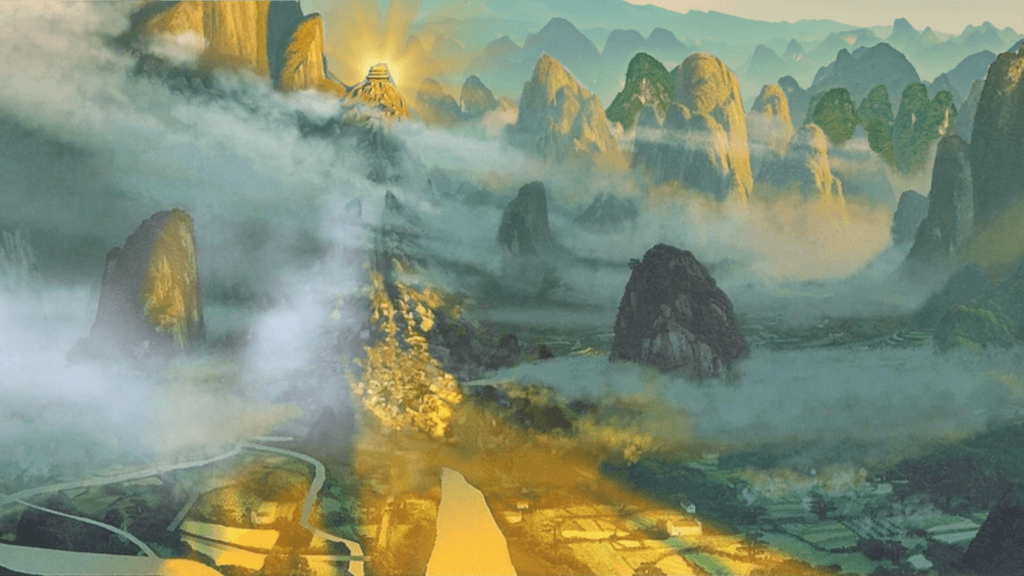
“Kung Fu Panda” draws inspiration from real-world landscapes and cultural landmarks to create its vibrant and immersive setting. Here’s how some iconic locations are reflected in the fictional world of the movie:
Valley of Peace: The Valley of Peace, where much of the action takes place, is reminiscent of the picturesque Li River Valley in southern China. Just like the lush green hills and winding rivers of the Li River Valley, the Valley of Peace exudes tranquility and natural beauty, providing a serene backdrop for Po’s adventures.
Jade Palace: The grandeur of the Jade Palace, where the Furious Five and Master Shifu reside, is reminiscent of the majestic Wudang Mountains in central China. With its towering peaks, ancient temples, and mist-shrouded forests, the Wudang Mountains are a UNESCO World Heritage site renowned for their natural beauty and cultural significance.
Imperial Palace: The imposing structure of the Imperial Palace, where the revered Dragon Scroll is kept, draws inspiration from the historic Forbidden City in Beijing. With its vast courtyards, ornate palaces, and intricate architecture, the Forbidden City served as the imperial palace of China’s Ming and Qing dynasties, embodying the opulence and grandeur of traditional Chinese culture.
Training Grounds: The training grounds where Po hones his kung fu skills are reminiscent of the rugged landscapes of Huangshan, or the Yellow Mountains, in eastern China. Renowned for their dramatic peaks, deep ravines, and ancient pine trees, Huangshan is a UNESCO World Heritage site revered for its natural beauty and spiritual significance.
Heroes of History
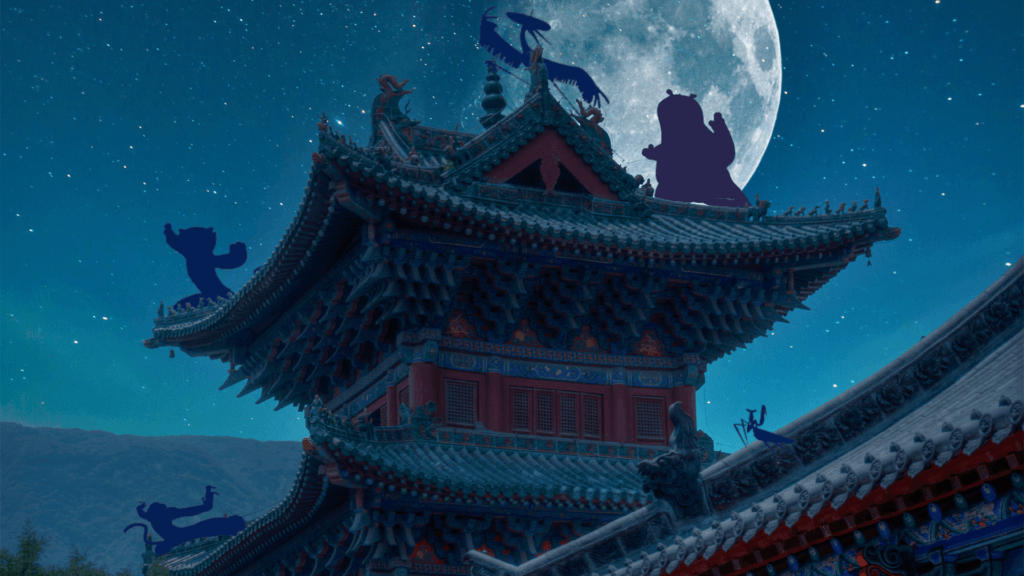
The Shaolin Temple, the birthplace of Shaolin Kung Fu, boasts a rich history dating back over 1,500 years. Founded in the fifth century, the temple has served as a center for martial arts practice, Buddhist teaching, and cultural exchange. Throughout its history, the temple has survived wars, invasions, and political turmoil, emerging as a symbol of resilience and spiritual devotion.
In the fictional world of “Kung Fu Panda,” the ancient history surrounding the warrior heroes and the protection of the Dragon Scroll is not explicitly defined in terms of specific timelines or historical events. However, it is implied that the tradition of kung fu and the guardianship of the Dragon Scroll have been passed down through generations of skilled warriors within the Valley of Peace. References are made to ancient teachings, legendary heroes, and the profound significance of the Dragon Scroll, hinting at a long and storied history that stretches back through the ages.
The story of “Kung Fu Panda” resonates with the background of the Shaolin Temple and its warrior monks. Both narratives emphasize a legacy of martial arts mastery passed down through generations, with dedicated guardians protecting ancient scrolls and teachings containing valuable wisdom. The Shaolin Temple, renowned for its rigorous training regimens and cultivation of skilled warriors, mirrors the temple in “Kung Fu Panda” as a bastion of tradition and spiritual enlightenment. Just as the heroes of the film confront challenges and adversaries to uphold peace and justice, the warriors of the Shaolin Temple have historically defended their principles of honor, integrity, and discipline against external threats. Both narratives celebrate the timeless virtues of courage, resilience, and the pursuit of inner harmony in the face of adversity.
The Importance of Food in Culture
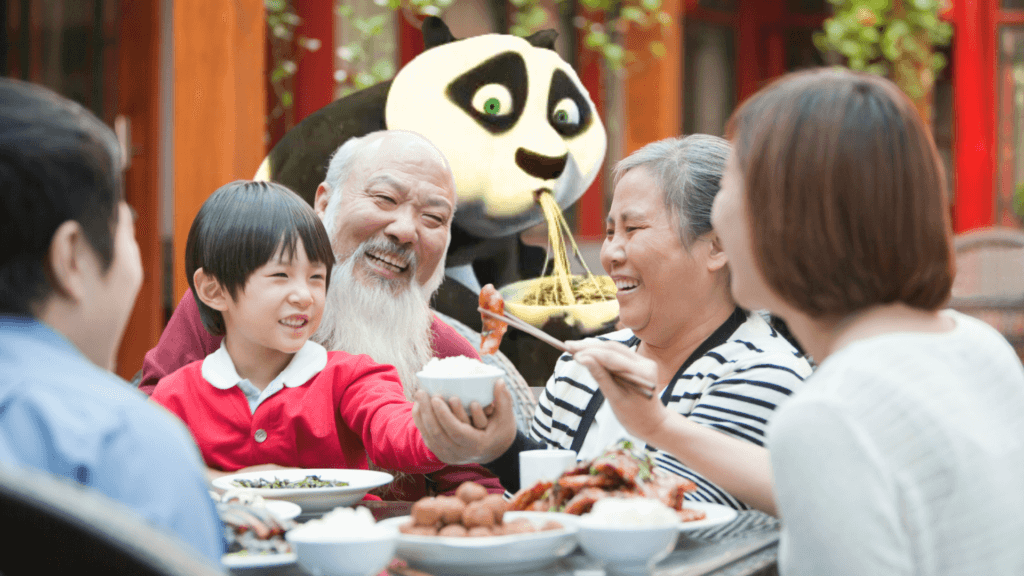
Food plays a central role in both “Kung Fu Panda” and Shaolin culture, nourishing the body and spirit with wholesome ingredients and mindful preparation. In “Kung Fu Panda,” communal meals and culinary delights serve as a backdrop for moments of connection and camaraderie among the characters.
Similarly, at the Shaolin Temple, food is viewed as a vital component of temple life, with monks following a vegetarian diet as part of their Buddhist practice. Shaolin cuisine emphasizes natural ingredients, balance, and harmony with nature, reflecting the principles of mindfulness and sustainability inherent in Buddhist teachings.
Outside of the temple, food holds immense cultural significance in Chinese culture as a whole, serving as a cornerstone of social gatherings, familial bonding, and traditional ceremonies. Just as with the Shaolin monks, it is not merely sustenance but a reflection of heritage, regional diversity, and the harmonious balance of flavors and textures that are integral to Chinese culinary traditions.
Cultural Significance of Pandas
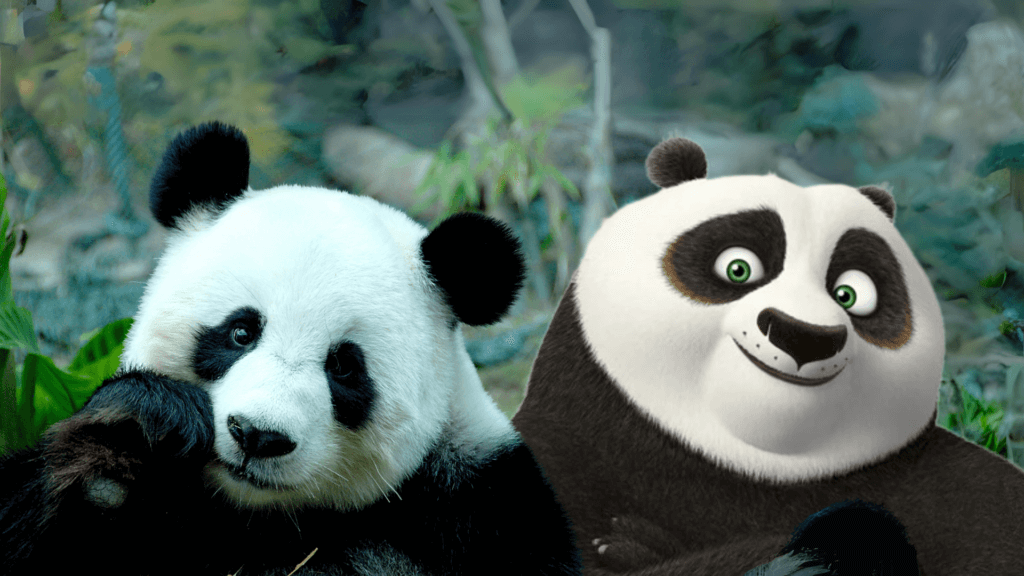
In Chinese folklore and culture, pandas hold a special place as symbols of peace, harmony, and balance. Revered for their gentle nature and unique appearance, pandas are often associated with qualities such as wisdom and tranquility. In “Kung Fu Panda,” Po’s identity as a panda is central to his character arc, as he learns to embrace his unique strengths and overcome his insecurities. The panda qualities of gentleness, laziness, bamboo eating (or in Po’s case, eating any food), and sometimes comical clumsiness, exhibited by Po do not exactly indicate kung fu warrior material! However, through Po’s journey, we see the importance of embracing one’s true self and finding inner peace amidst life’s challenges and societal misconceptions. He proves that with determination, humility, and passion, anyone can follow their dreams.
Conclusion
In conclusion, “Kung Fu Panda” offers a captivating portrayal of kung fu and its cultural significance, drawing inspiration from real-world traditions such as Shaolin Kung Fu. Through themes of diversity, perseverance, and self-discovery, the films celebrate the timeless wisdom and profound beauty of martial arts practice. As we journey through the landscapes of both imagination and tradition, we are reminded that the essence of kung fu lies not in the fists but in the heart and soul of those who practice it. Just as Po discovers his inner strength and embraces his destiny, so too do the Shaolin warrior monks strive to embody the principles of compassion, humility, and enlightenment in their quest for martial and spiritual mastery.
Over time our blog at Maling Shaolin Kung Fu Academy will post articles related not only to Kung Fu, but Chinese culture, tradition, history, legends, media, and philosophies. While Kung Fu remains at the core of our practice and teachings, we recognize that true understanding and appreciation of this ancient martial art extend beyond physical techniques. By exploring a diverse range of topics, we aim to provide a holistic view of Chinese heritage and its influence on martial arts, fostering a deeper connection with our students and readers. Through these articles, we hope to inspire curiosity, broaden perspectives, and promote a greater understanding of the rich tapestry of Chinese culture and its profound impact on the world.


